Japanese Culture & Traditions, Japanese Traditional Crafts, National Treasures of Japan
Masamune and Muramasa: The Secret History of Japan’s Two Greatest Katana Swordmakers (Part 2)
Muramasa’s Cursed Yōtō Swords: History and Top 3 Creepy Legends
Today’s article is part 2 of our series on Japan’s most famous and revered katana swordmaking duo: Masamune and Muramasa. In part 1, we looked closely at the history of Masamune and his lost masterpiece, the Honjo Masamune sword (previous post LINK here). With a clean, respectable image and an honourable employment record (hired by the Bakufu feudal government as their top official swordmaker), Masamune’s story provides an interesting contrast to the one we will see here today. While today’s katana hero showed many of the same qualities of his predecessor Masamune at first, stories of his haunted blades and their strange effects spiraled out of control after his disappearance from the spotlight.
That’s right; today’s article is about the cursed, supernatural swords of Muramasa. A sort of Mr. Hyde to Masamune’s Dr. Jekyll, Muramasa’s life and work offers a look into the darker side of Japanese folk-lore and history. A country filled to the brim with legends of ghosts and evil spirits, Muramasa and rumours and that surround him give us a taste of the spooky tales of ancient Japan.
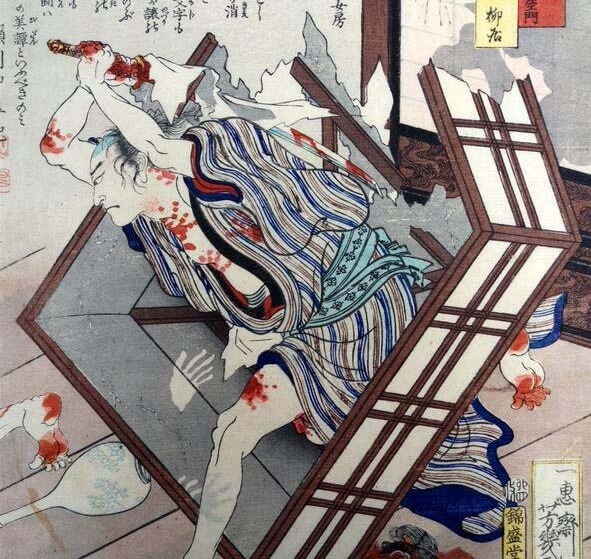
(Image: twitter.com)
Just like last time, I have to warn you: many of the mysteries and legends which surround Muramasa (as with Masamune) are still unsolved, unconfirmed, or otherwise without a conclusive ‘ending.’ Like a riddle wrapped in a mystery, inside of an enigma, these tales continue to evade and confuse researches, all the while themselves growing and expanding with a life of their own.
Early Success as a Respected Katana Swordmaker
Much like master swordmaker Masamune before him, Muramasa’s life is one of historical uncertainty. Add to this his almost mythological reputation, and you get some pretty far-fetched tales about his life and work. Historians still to this day have trouble sorting out the legend from the cold hard facts. Maybe we will never know just where and when the first Muramasa master was born. What we do know is that up to three generations of Muramasa masters were trained and active around the 1660s and 1670s. Just when this line began or finally died out, remains a mystery.

(Image: wikimedia.org)
While alive, the original Muramasa’s reputation remained good. In fact, many top level samurai appreciated the cutting power and overall quality his characteristic ‘Muramasa-edge’ and ‘Muramasa-tang’ provided. The wave shaped line along the edge matched on both sides, making for a beautiful blade. With a thicker center towards the hilt, Muramasa’s tang was said to provide a nice balance. For this he was rewarding with the patronage of early Tokugawa officials. Things remained positive for Marumasa until his death. Then, with the disappearance of his family line and a strange series of mishaps, the Marumasa name was tarnished forever.
A Cut above the Rest: The Demonic Slice of a Muramasa Sword
Here we begin to uncover the spiritual connections made by many legends about Muramasa katana – those which link his katana with demons and various ill-effects for those who wield it. As mentioned, Muramasa’s blades were adopted by Tokugawa Ieyasu, his clan of Mikawa samurai, as well as his ancestors. The misfortunes of the Shogun and his family thereafter often involved Muramasa blades as they were in such abundance in the court. Accidental stabbings, slips and spills resulting in fatal injuries, these were the stories that spread like wildfire through the villages and cities of feudal Japan. Then, word that the Tokugawa Shogun himself banned these katana from his court helped spread the idea that Muramasa swords were a type of ‘Shogun-kryptonite.’
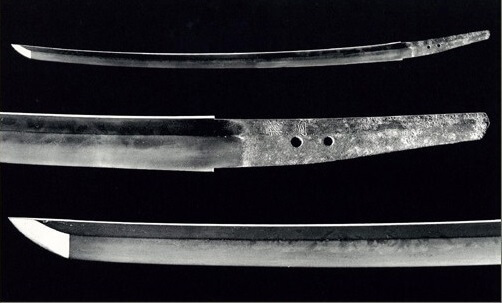
Known as the bearer of bad luck and general harm to the Tokugawa clan, Muramasa swords became the weapon of choice for enemies of the Shogun-government authorities. Thus, when former and enemy-clan samurai loyal to the Imperial Army joined forces during the Japanese Civil War (or, Boshin War; 1868-1869), they clambered to get their hands on Muramasa blades to fight the Tokugawa Shogun.
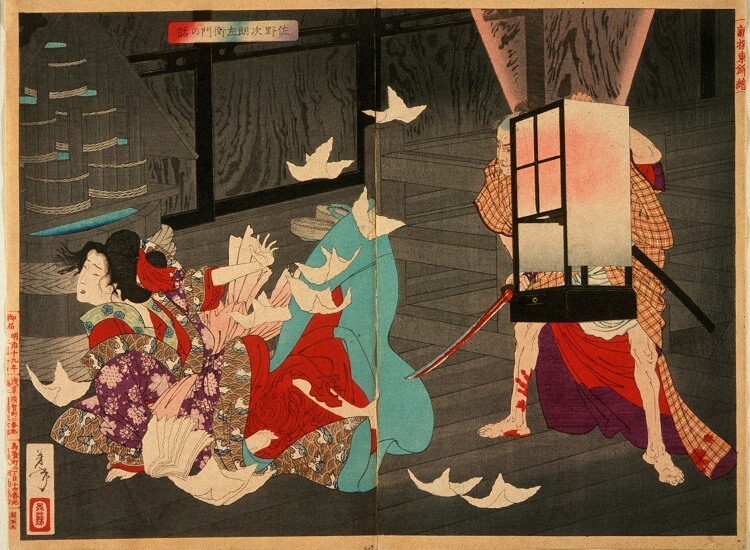
(Image: wikipedia.org)
Throughout this period the word Muramasa was used in popular theatre to denote the weapon of a mad or possessed killer, adding to this reputation. This acted to fan the flames of these rumours even further. Authors equipped their violent anti-heroes with Muramasa swords. As an explanation to the villain’s madness, the Muramasa name became further connected with violence and treachery.
Reputations are, as it seems, quiet hard to shake. These legends have snaked their way back to the bladesmith himself: some say that Muramasa suffered some madness – a sickness that somehow found its way into his blades, forcing its owner to draw blood before allowing itself to be sheathed. This of course contradicts the fact that he maintained a strong and popular reputation while still alive, however.
Top 3 Strangest Muramasa Legends: the Creepy gets even Creepier
The strangest stories (here in English for the very first time) reveal the chilling beliefs people have about Muramasa blades. Check these out:
-
“Together with Masamune, Muramasa placed his sword in a flowing river in order to compare his creation against his rival’s. Dead leaves flowing by were easily cut by both, while the fish and other debris were left whole by Masamune’s sword.” The moral here is that Masamune’s sword would not kill that which is peaceful and living, while Muramasa’s easily and hungrily sliced everything that it touched.
-
“Before the Second World War, a researcher at a famous university in northern Japan set about testing and studying the metal, composition, and sharpness of various ancient artifacts. When news got out about his impressive new method of measurement, people from all around brought in their family heirlooms to be tested and evaluated by the good professor. Eventually, people began bringing in ancient swords, until at last a Muramasa found its way to the professor’s lab. While in his possession, the professor was struck with great excitement – his heart would not stop pounding. Readings from the sword, however, would not stabilize – the numbers kept jumping higher and lower. He was forced to abandon the experiment as he couldn’t get a steady reading.” Matching the heartbeat of its bearer, the Muramasa sword would not calm down for the experiments.
-
“The cursed edge of a Muramasa makes it exceptionally dangerous – for example, should you slip while sharpening it, its cut will be so fine and so clean that you might even go on working, never noticing the fingers which have now fallen to the floor.” These are the tails of professional sword sharpeners who tremble at the thought of having to service a Muramasa katana. Others mention a certain stinging or tingling sensation unlike the wound from any other blade.
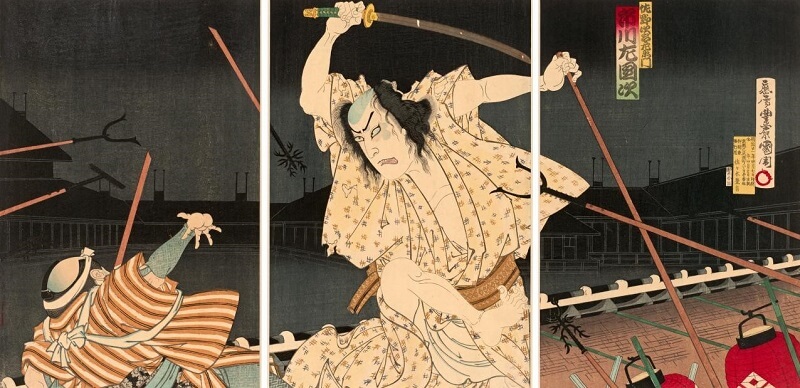
(Image: ngv.vic.gov.au)
Muramasa Swords Today
Today, katana swords bearing the Muramasa name have appeared in film, television, manga, and video games, usually as a demonic weapon that drives its wielder to become a bloodthirsty and possibly indiscriminate killer. So popular are legends of these cursed swords that “Muramasa’s Yōtō (Cursed Sword)” has become the trademark name for all-out-attack strategies in various tabletop and online games. Implying the craziness of the player, this strategy is a high-risk-high-reward move requiring more than a little bit of guts.
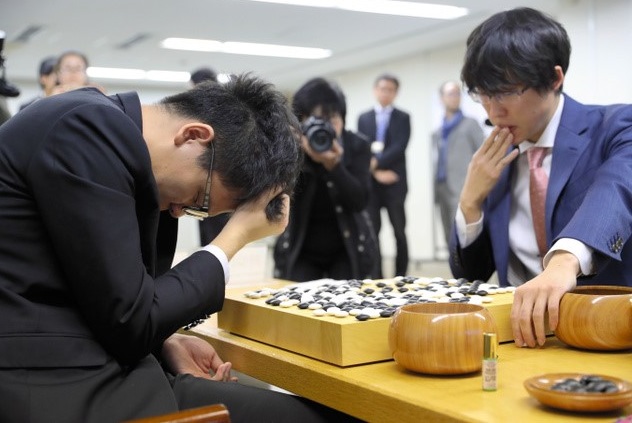
(Image: asahi.com)
While we might think these tales of bad luck and demonic curses are silly, consider this: Japan includes not a single Muramasa sword in its list of National Treasures (Kokuhou). Like I said before, even after hundreds of years, reputations truly are tough to shake.

Author - Jay
In my spare time I enjoy watching baseball, tasting local cuisine, and exploring by road and rail. Having lived in several cities around the world, I have an appreciation for local as well as international histories and cultures. Excited by cultural and social exchange, it is my hope that this blog will help promote an interest in Japanese traditional wares and practises by introducing you to their history and meanings.

About Orientalsouls.com
Learn and Buy Japanese Craftsmanship, Tradition & Culture
OrientalSoul.com is the online shop where you can buy traditional crafts of Japan.
We only sell selected authentic products in which true spirits of Japanese craftsmanship exist.
You may be able to find similar products in other shops for lower prices. However, we sell products based on fair prices that worth labor and value of experienced craftsmen.
In addition, we introduce stories about product history, how a product is made, what makes it different from others, and how the product enriches your life!